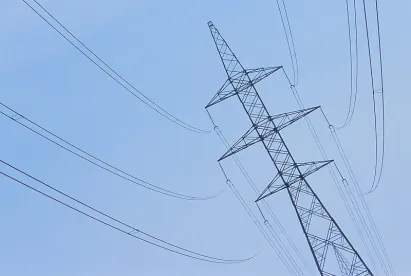On September 17, 2015, FERC issued a notice of proposed rulemaking (NOPR) regarding settlement intervals and shortage pricing in regional transmission organization (RTO) and independent system operator (ISO) real time electricity markets. The NOPR states FERC’s preliminary finding that RTO/ISO real time use of different time intervals for the dispatch (e.g., five minutes) and the settlement (e.g., one hour) of energy and operating reserve transactions is unjust, unreasonable and unlawful. FERC proposes to require that all RTOs/ISOs use the same time interval for the settlement and dispatch of these transactions.
The NOPR also addresses delays between the occurrence of a shortage of energy or operating reserves and the triggering of shortage pricing. It would require RTOs/ISOs to invoke shortage pricing as soon as a shortage occurs regardless of the shortage’s cause or likely duration. The NOPR follows up FERC’s inquiry in Docket No. AD14-14-000 regarding imperfections in RTO/ISO price formation mechanisms.
Dispatch and Settlement Intervals
According to the NOPR, using different dispatch and settlement intervals for real time energy and operating reserve transactions may fail to reflect the value of those services. Using an hour for settlement and five minutes for dispatch as an example, the distortion arises because compensation for the resources is based on the average system costs and output throughout the hour rather than output and prices in the five-minute period within the hour when the system has the actual need for the resources.
The NOPR states that the settlement-dispatch timing difference yields distorted price signals that could result in under-compensating some suppliers, over-compensating other suppliers able to game the timing difference to their financial advantage, failure to elicit resources to respond to system needs, and inefficient resource use as suppliers time their output to billing criteria rather than system needs. The NOPR also finds that the timing difference results in bundling costs for these transactions together with other system costs into non-transparent “uplift” charges that fail to reflect market-determined prices. The NOPR recognizes significant metering and other costs as a downside of converting to “sub-hourly” settlements in order to eliminate the timing difference.
The NOPR solicits comments on whether"
-
The 12-month period following compliance filings (due within four months of the final rule’s issuance) is adequate to implement sub-hourly settlements that match system dispatch;
-
The grace period for implementing sub-hourly settlements is too long;
-
The costs of converting to sub-hourly settlements outweigh the benefits;
-
The conversion to sub-hourly settlements to match system dispatch is a necessary element of other needed price formation enhancements;
-
Sub-hourly settlements should be required only for transactions internal to an ISO/RTO or extended to intertie transactions; and
-
Sub-hourly settlements should be limited to energy transactions or should include both energy and operating reserve requirements.
CAISO, NYISO and SPP already employ matching sub-hourly settlement and dispatch which they perform at five-minute intervals. Thus, those entities’ compliance filings would merely require a showing that their dispatch and settlement practices conform with the requirements of the proposed rule. PJM, MISO and ISO-NE use five-minute dispatch and one-hour settlement intervals. Those entities’ compliance filings (due within four months of adoption of the proposed rule) would show their plans for conforming with the rule’s requirements. The three system operators would then need to implement simultaneous dispatch and settlement procedures within the following 12-month period.
Shortage Pricing
According to the NOPR, the proposed requirement that RTOs/ISOs implement shortage pricing immediately upon occurrence of a shortage regardless of length or cause is intended to ensure that short-term prices reflect potential reliability costs and the market value of internal and external sources that respond to the dispatch signal. Furthermore, FERC found that prices in each dispatch interval should reflect the value of the resources called upon to address the shortage. According to FERC, failure to immediately institute shortage pricing fails to reflect the value of those resources, impairs system dispatch, and hinders appropriate incentives for resources to address the shortage. FERC specifically found that denying shortage pricing during shortages that last even less than a single five-minute dispatch period could produce unjust and unreasonable rates.
FERC rejected the argument that some very brief shortages could be artificial in nature and the product of a “mathematical artifact” of system modeling by counseling RTOs/ISOs to take steps to mitigate and prevent such shortages. FERC also rejected the argument that shortage pricing is inappropriate if the shortage is so brief that resources are unable to respond to dispatch signals before the shortage ends. FERC said that triggering shortage pricing for all shortage events regardless of length or cause would encourage resources to take actions to ensure their availability to respond to high prices thereby alleviating shortages and in helping to avoid shortage pricing during subsequent dispatch periods.
FERC asked parties to comment on the reasonableness of the NOPR’s requirement that all RTOs/ISOs comply with the shortage pricing proposal within four months of issuance of the final rule. FERC also invited comments on the reasonableness of its shortage pricing proposal, but it did not request comments on specific aspects of the proposal. FERC emphasized that its shortage pricing proposal concerned only the need to invoke shortage pricing and not the computation method or level of a just and reasonable shortage price.
Comment Deadline
The deadline for filing comments on the NOPR is sixty days counting from the date of the NOPR’s publication in the Federal Register.
Future Price Formation Actions
FERC stated that the current NOPR is only the first of the price formation actions it plans to take. Further price formation topics include offer price caps, mitigation, uplift transparency and uplift drivers. FERC’s goal is that prices reflect true marginal costs, take account of constraints, and fully compensate resources for their variable costs of providing service. FERC can be expected to eliminate RTO/ISO tariff provisions that would frustrate achievement of that goal and require adoption of tariff provisions that would promote achievement of that goal.


 />i
/>i

